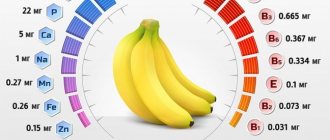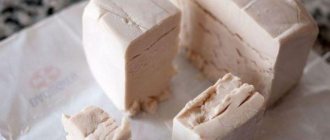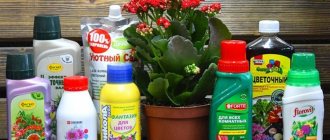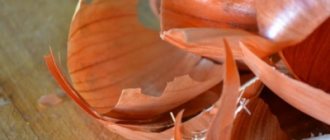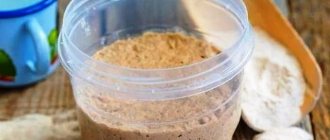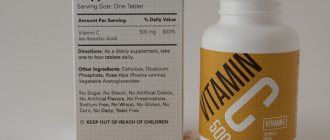In our age, store shelves are overflowing with chemical products, despite the fact that we all want to consume more natural products. In this regard, the use by gardeners of natural means of protecting and feeding vegetable crops is becoming increasingly important. Today we will talk about the use of whey for the garden, its benefits for plants and the necessary proportions.
The benefits of whey for plants 1.1 Using whey in the garden 2. What is watered with whey 3. How to spray vegetable crops with whey 3.1 Feeding cucumbers 3.2 Feeding tomatoes
Photo ru.depositphotos: whey is an effective fertilizer for the garden.
How to make whey
By saturating tomatoes, cucumbers, strawberries and plants with the microelements that make up the fermented milk product using whey, you can get a good harvest of high-quality fruits. You can buy whey in the store or make it yourself using milk.
Whey recipe:
- add a little of any fermented milk product to the milk and leave to sour in a warm place;
- Place the sour milk in a saucepan over low heat and heat so that it does not boil;
- after some time, the sour milk will separate into curd mass and liquid;
- Remove the pan from the heat and strain the liquid through cheesecloth.
Approximately 600 ml of whey will be obtained from 1 liter of milk.
Features of preparing the solution
Today there are many useful products that can be prepared using whey. Thanks to this, it is possible to choose the most effective option.
See also
Instructions for use of Etamon, growth stimulant dosage and analoguesRead
With water
To apply the product by the root method, whey is combined with water in a ratio of 1:10. To do this, use only clean water. It should not contain chloride compounds. The liquid should be warm and soft. Otherwise, the acidity of the composition may change significantly. This will negatively affect the acid-base balance and stop the development of crops. The prepared mixture needs to be watered at the root area at a distance of approximately 50 centimeters. After which you need to moisten the soil abundantly with clean water.
Expert opinion
Zarechny Maxim Valerievich
Agronomist with 12 years of experience. Our best country expert.
Ask a Question
It is important to consider that whey contains lactic acid. Therefore, the substance can provoke an increase in soil acidity parameters.
For foliar application of the product, it is recommended to use a serum solution with a concentration of 10%. To do this, you need to generously sprinkle the leaves of the plants with the composition. Gardeners do not recommend using a sprayer for this, since small fragments contained in the liquid can lead to clogging of the sprayer.
To increase the effectiveness of the procedure, you need to add a small amount of shampoo to the solution. Crushed laundry soap is also suitable for this purpose. Spraying is prohibited in windy or rainy weather. It is also not recommended to carry out the procedure during increased solar activity.
With iodine
For foliar application of the composition, it is recommended to use the following components:
- 3 liters of water;
- 1 liter of whey;
- 5 drops of iodine.
All of the listed components must be mixed thoroughly. To improve the adhesion of the product, you need to add laundry or liquid soap to it. The prepared solution can be used to treat crops.
With grass
To make this composition, you need to prepare a barrel with a capacity of 50 liters. It needs to be filled with mowed grass and a bucket of ash added. After this you need to pour in the serum. The composition should ferment in a warm place for 2-3 weeks. The finished composition must be mixed in equal proportions with water. For 1 plant you should use 500 milliliters of the product.
With ash
To make a healthy mixture, it is recommended to take the following components:
- 2 liters of whey;
- 10 drops of iodine;
- 5 tablespoons of honey;
- 1 glass of ash.
All components must be thoroughly mixed and left to infuse for 2-3 days. It is best to use the composition during the flowering period. In this case, it is used by the foliar method. The substance is also excellent for soaking seed material.
See also
Rules for using dolomite flour and composition, consumption and how to apply fertilizerRead
With boric acid
To avoid the development of pathologies in plants and activate growth processes, it is recommended to use the following ingredients:
- 1 liter of whey;
- 10-15 drops of iodine;
- 0.5 teaspoon of boric acid.
All components must be thoroughly mixed and then combined with 1 bucket of water. During the summer, the plantings need to be sprayed with the composition 2-3 times. If there is rotting of the plant in the lower part, this area also needs to be treated with such a solution. This will help reduce the appearance of rot or eliminate it completely.
Application of serum for plants
Whey is not used in its pure form. Solutions are prepared from it, the concentration of which depends on whether they will be used for watering or spraying plants:
- water the plants with a solution prepared from fermented milk product and water (1:10);
- To spray the leaves, a more concentrated whey solution is prepared (1 liter of product is diluted in 3 liters of water).
Attention! Whey acidifies the soil, so for root feeding it should be used with caution so as not to acidify the soil.
Product benefits
Whey contains more potassium and sulfur amino acids than milk or cottage cheese, and is not much inferior to them in the amount of calcium and phosphorus.
These substances are necessary to stimulate flowering, develop healthy young foliage, germinate seeds and restore weakened plants. Interesting fact: according to Russian researchers, adding whey to compost increases the digestibility of microelements and improves the quality of fertilizer due to fermentation and inhibition of the growth of pathogenic microbes.
Due to the nature of production, the pH of the whey is 4.6-5 units. This means that it can be used as a soil acidity corrector if the plant prefers a slightly acidic and acidic environment. Increased soil acidity has a detrimental effect on pathogenic fungi.
How to treat tomatoes with whey
Tomatoes need not only feeding, but also protection from various diseases. Most often, the crop is affected by late blight, from which whey will help protect. After spraying the bushes with a solution, a film forms on the leaves, which will prevent fungi from developing and penetrating into the plant itself.
You will be interested to know: Composition and use of the universal fertilizer JSC Fertika Vesna Summer for the garden and vegetable garden
The first foliar treatment of tomatoes can be carried out two weeks after planting the seedlings. Since the serum film will not last long on the foliage, spraying is repeated every 10 days. It is also recommended to process tomatoes in open ground after rains.
To treat tomatoes with whey on the leaves, use a solution of a liter of water and a liter of fermented milk product.
Horse feeding with tomato whey solution is carried out according to the following schedule:
- The first time you can apply fertilizer to the soil 12-14 days after planting the seedlings.
- The second feeding is carried out two weeks after the first.
- The tomatoes are watered the third time during flowering.
This root feeding will help tomatoes develop well and increase yield.
Let's sum it up
In order for the garden to delight with ripe fruits and bright flowers, it is not enough just to plant the plants and water them. It is necessary to feed and protect them from diseases and pests. Many summer residents have already tried whey for these purposes:
- you can use store-bought or natural serum;
- the usual ratio of this acidic product to water is 1 to 3;
- It is better to water young bushes with the solution, and adult plants are both watered and sprayed (in turn);
- fruit trees can be processed in early spring;
- vegetable crops (carrots, onions, beets, etc.) are treated with whey throughout the season, after each rain;
- If you are allergic to dairy products, use this formulation with caution. Wear gloves and protective clothing.
Serum with iodine against late blight and powdery mildew
Iodine not only helps fight diseases, but also promotes fruit ripening. Therefore, experienced gardeners recommend using the following recipe to protect tomatoes and potatoes from late blight, and cucumbers from powdery mildew:
- add 1 liter of whey to 9 liters of settled warm water;
- add 20 drops of iodine to the resulting mixture;
- mix everything well and strain.
This solution will protect plants from diseases, help them better adapt to temperature changes and increase immunity.
Preparing fertilizer at home
Use whey in the garden for plants in the following ways:
- Dilute 1 liter of liquid in 10 liters of water - this is the simplest recipe. 10 drops of iodine tincture to it to enhance metabolism and drive away pests from the area.
- Dilute a packet of baker's yeast in a liter of whey until completely dissolved. Half a bucket of chicken manure and a bucket of wood ash are diluted in a 30-liter Both mixtures are combined and infused for 2 weeks. Before watering, you need to take a liter of concentrate and dilute it in a bucket of water. Each plant uses half a liter of fertilizer.
- If there is a lot of waste, then they fill a barrel with beveled green manure - 50 liters. Add a bucket of ash there and leave for 2 - 3 weeks. Next, dilute 1:1 with water and use for watering.
- To soak the seeds before planting, make a tincture with honey - 5 spoons and 10 drops of honey. Pour in 2 liters of whey and stir until the honey is completely dissolved. This solution can be used to water indoor flowers and garden crops.
It is advisable to carry out treatment 2 – 3 times a month. It is better to start while the plants are in a healthy state, that is, for prevention. The fact is that pests and fungus are so accustomed to chemicals that they can withstand treatment with natural products.
Feeding plants with serum is especially important on cloudy days, when spores of fungal diseases actively multiply. With the help of preventive actions, plant diseases such as powdery mildew, scab, fusarium, late blight and brown spot can be avoided.
It must be remembered that the main reason for the appearance of fungus is a lack of nutrients and microelements, so in the fall you need to apply organic matter and complex mineral fertilizers to the beds.
If the soil is constantly exploited, then more organic matter and biological preparations with soil bacteria are needed. In this case, whey can only be used for prevention.
Against pests
Using milk waste you can get rid of onion flies, aphids, and cabbage flea beetles. To do this, dilute 1 liter of whey in 5 liters of water and rub laundry soap into it. This solution is sprayed on the leaves from below and above.
Slugs, insects, and mole crickets react to the smell of milk. To catch them, you need to bury a jar in the ground and pour a little milk into the bottom. In the morning, the jar is usually full, since pests cannot get out of it.
Prevention and treatment of powdery mildew
Roses and cucumbers are often affected by powdery mildew, which an infusion of whey and ash can help get rid of. It is effective only for prevention and at the initial stage of the disease.
Recipe:
- Pour a glass of ash into a saucepan with three liters of boiling water, bring to a boil, cover with a lid and put in a dark place.
- After 7 days, strain the infusion and add 3 liters of whey and water.
The finished ash-whey infusion is used for spraying the above-ground parts of plants.
Interaction with other fertilizers
Whey as a fertilizer interacts well with mineral complex mixtures, as well as organic substances - ash, green infusion of green manure, a complex of microelements, compost or humus.
When mineral components are added to the soil, bacteria help convert them into a form convenient for absorption, passing them through their digestive tract. The result is chelated forms of micro and macroelements.
When adding whey to feed plants in an infusion of green manure, fermentation occurs faster, and nutrients enter the soil in a semi-decomposed form.
The use of whey in the garden as a means of restoring microflora leads to the proliferation of bacteria and the rapid decomposition of plant residues. This in turn leads to an increase in the amount of humic acids - the main factor of fertility.
Related article: Caring for violets at home: watering, replanting, fertilizing, propagation
Using whey in a greenhouse
Since the greenhouse has high humidity and air temperature, this should be taken into account and the whey solution should be used carefully to process tomatoes and cucumbers:
- for watering, use only a warm solution within +20 degrees;
- Before using the serum, the soil must be watered, since fertilizing on dry soil can burn the roots;
- Feeding should be done early in the morning or in the evening;
- The greenhouse should be ventilated regularly.
Using a whey solution, you can feed and protect cucumbers, tomatoes, root vegetables, melons, onions, flowers, and fruit trees from diseases. But for eggplants and peppers, it is not recommended to use fermented milk product.
Methods for adding whey
All country and garden plantings are fertilized in two ways:
- foliar;
- root.
Root feeding is carried out by direct application (i.e. watering) of fertilizer directly under the root. This way the substances are absorbed faster. Typically, this method is used for young plants. Foliar application is done by spraying fertilizer using a special device.
What does a sour product go well with?
Whey is often combined with other folk remedies:
- iodine;
- brilliant green;
- baker's yeast;
- wood ash;
- chicken droppings;
- mown grass;
- honey.
Yeast is a natural growth stimulator and contains B vitamins, magnesium and active enzymes. It is recommended to combine the baking product with fertilizers containing potassium, since yeast helps to wash it out of the soil. It is good to combine yeast with wood ash, as it is rich in magnesium, sulfur, potassium and other elements.
To increase the nitrogen content in the soil, whey is combined with chicken manure.
Mown grass is a universal remedy containing all the necessary substances for plant development. During fermentation, it releases a large amount of amino acids and beneficial microelements.
Two ways of fattening
The presented fermented milk product is especially loved by cucumbers, zucchini, squash and even roses and other flowers. Therefore, fertilizers can also be used in the flower garden. However, tomatoes appreciate it most of all - nothing else transforms them so much.
Applying fertilizer to vegetable crops
But in order for plants to get the maximum “positive emotions” from such a “delicacy,” you need to know in what form “the dish can be served.” There are two main methods for adding fermented milk products:
- Root method - nutrients are applied directly to the soil;
- Foliar method - the solution is applied to the leaves and stems of growing vegetables and fruits.
Both methods have their advantages and limitations for use. So, the concentration of the substance for the root method should be at a lower level so that it does not burn the root system. For spraying, stronger solutions are used, making the effect more effective.
When spraying, it is possible to save fertilizers, since they are not washed out of the soil by water. It is better to alternate both methods with each other. Can be used both in greenhouses and in beds.

